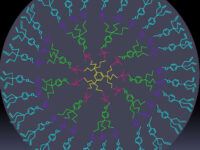Some people love eating peanut butter and jelly sandwiches, and some could go into anaphylactic shock if you eat one in the same room as them. Peanut allergies are one of the most common food allergies in the United States, and are particularly dangerous because peanut products are highly prevalent, making the risk of cross-contamination high. The severity of symptoms and allergen tolerance can vary from person to person, making food allergies hard to manage for the most sensitive, who can have allergic reactions to small concentrations of airborne particles. The current management standard is avoidance, and that often isn’t feasible if someone can’t even be in the same room as the allergen. Palforzia, the first drug approved by the United States Food and Drug Administration (FDA) for food allergies, could offer some relief for the most severely allergic.
An allergic reaction is caused by the immune system overreacting to a foreign protein that isn’t actually dangerous, like peanut protein. Immune cells have millions of receptors to identify different foreign proteins and mount a response to eradicate them, although typically, the receptors are cultivated to not react with harmless things, like your own cells or peanut proteins. When immune cells mistakenly develop receptors that recognize peanut proteins, they respond to the apparent threat by releasing IgE, the antibody responsible for allergic reactions, and inflammatory molecules like histamine. After the first reaction, the immune system remembers the threat and will continue to respond in the same way once enough of the allergen is detected to be considered a threat. The goal of oral immunotherapy treatments like Palforzia is to prevent reactions by increasing the threshold to trigger an allergic reaction.
Palforzia is given as a pill containing a very low dose of peanut protein. The lowest dose is given continuously until the immune system becomes more tolerant, then the dose is increased and the process repeats.
Palforzia is given as a pill containing a very low dose of peanut protein. The lowest dose is given continuously until the immune system becomes more tolerant, then the dose is increased and the process repeats. After several months of this treatment, 67.2 percent of children were able to ingest 600 milligrams of peanut protein with no or mild allergic symptoms. Before treatment, the children could only tolerate on average 10 milligrams. This will not enable patients to intentionally eat peanuts, but is expected to be sufficient to minimize responses to airborne particles or cross-contamination of foods.
Building tolerance to an allergen can work for some people, but regular exposure to something that causes life-threatening allergic reactions isn’t necessarily safe. The majority of patients in the trial experienced a severe allergic reaction during treatment, some even at the lowest dose. To minimize the risk, Palforzia is given in a clinical setting to monitor for allergic reactions every time the dose is increased. The highly standardized dosages make this treatment potentially safer than a do-it-yourself version, although some question whether this is worth the price tag. Palforzia will be priced at $890 a month when it is commercially available, but the peanut flour it’s made of can be bought at the grocery store.
Ultimately, the arguments surrounding this drug can be highly personal. Oral immunotherapy doesn’t always work, and it almost never works without side effects, but to many, any improvement in the concentration of peanut protein they can ingest can change their lives. Palforzia is the first FDA-approved treatment for any food allergy, and the scientific backing for building tolerance to allergens could pave the way for many more treatments and many less allergic reactions.
New England Journal of Medicine (2018) DOI: 10.1056/NEJMoa1812856
Image source: Pixabay.






